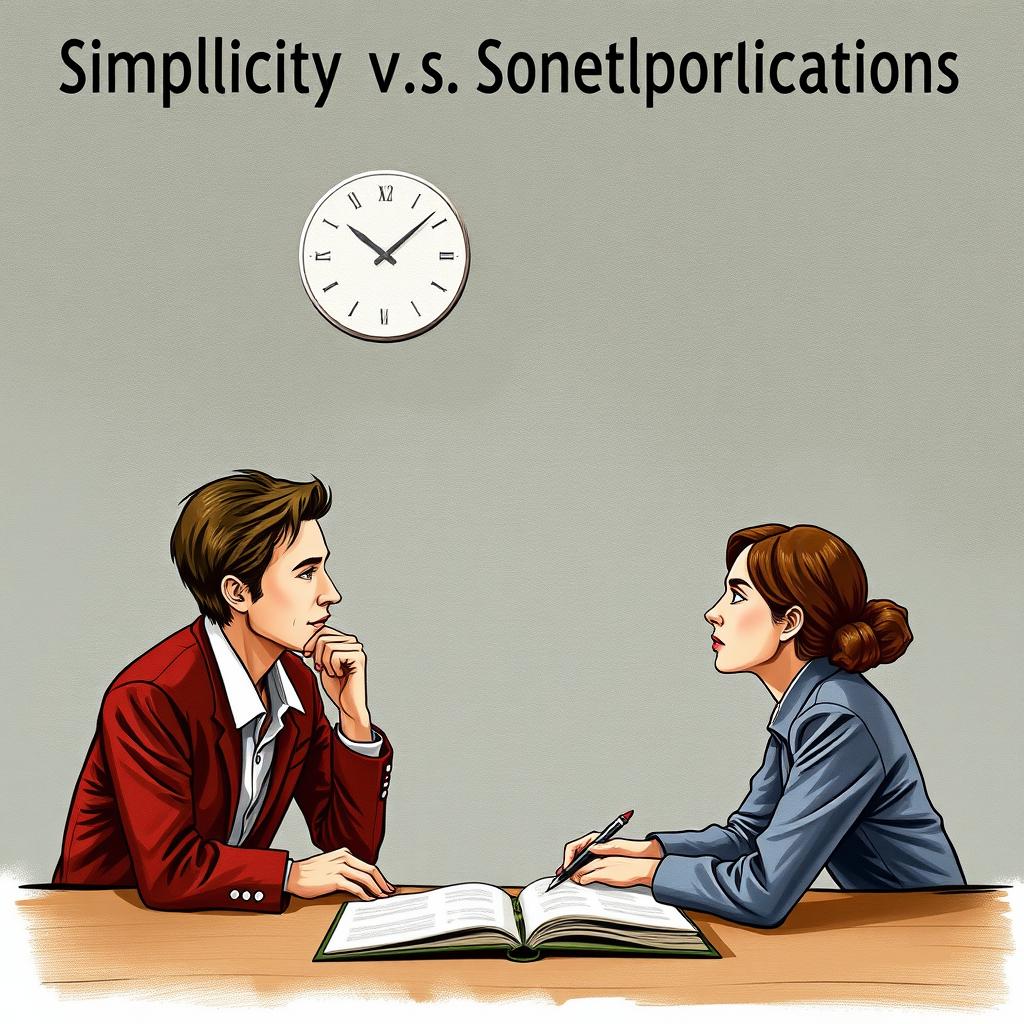The Future of Copywriting: Embracing Relational Communication for Sustainable Success
Estimated reading time: 7 minutes
- Understanding the shift: Transitioning from transactional to relational copywriting enhances customer loyalty.
- Emotional connections matter: Brands that connect on a deeper emotional level drive sustainable growth.
- Engagement is key: Encourage two-way conversations to foster relationships with customers.
- Measuring success: Focus on long-term customer metrics rather than short-term sales.
Table of Contents:
- Introduction
- The Limitations of Transactional Copywriting
- Embracing Relational Copywriting
- Examples and Templates
- Call to Action
- Conclusion: The Dawn of Relational Commerce
- FAQ
Introduction
In an ever-evolving marketplace, the way we communicate has never been more crucial. As businesses strive for immediate gains, the traditional approach of transactional copywriting is rapidly losing its appeal. This method, characterized by pushy sales tactics and one-dimensional interactions, often leads to customer disconnection. Research indicates that consumers today crave authenticity, engagement, and emotional resonance with brands. Therefore, the challenge before us is clear: how can businesses pivot from transactional to relational copywriting and authentically connect with their audience?
The crux of the problem lies in the fact that transactional copywriting treats customers as mere data points rather than individuals with unique experiences and needs. By focusing solely on quick conversions, businesses miss the opportunity to forge lasting relationships that enhance customer loyalty and brand affinity. Research shows that fostering emotional connections leads to repeat customers who become brand advocates—essential in today’s competitive landscape.
At professionalizeitto.me, we understand this paradigm shift and are equipped with the tools and insights to help you transition to relational copywriting. In this blog post, we will delve into best practices grounded in empirical evidence for building enduring customer relationships through effective communication, providing actionable steps that can elevate your brand.
The Limitations of Transactional Copywriting
Transactional copywriting is akin to a sugar rush—providing an immediate boost in sales but leading to inevitable crashes. Consider the following limitations:
- Erosion of Customer Loyalty: When customers are treated as numbers rather than individuals, they are more likely to drift towards competitors who offer better experiences or perceived value.
- The Commodity Trap: Focusing on price reduces products and services to mere commodities, undermining the brand’s unique value proposition and eroding profit margins.
- Myopic Vision: An overemphasis on short-term sales pulls attention away from nurturing long-term customer relationships that drive sustainable growth.
- Sterile Communication: Transactional copy tends to lack personality and emotional warmth, failing to engage customers authentically.
In contrast, relational copywriting fosters trust and resonates on a deeper level, encouraging customers to engage beyond a single interaction. This leads to loyalty, advocacy, and a sense of community around your brand.
Embracing Relational Copywriting
The shift to relational copywriting isn’t merely about jargon—it’s about creating real connections. Here are the foundational principles to get you started:
1. Understand Your Audience
Be it through surveys, social media insights, or direct feedback, knowing your audience’s values, pain points, and desires is critical.
- Create Customer Personas: Develop detailed profiles that outline characteristics, preferences, and behaviors of your ideal customers.
- Engage Authentically: Utilize customer insights to craft messages that speak directly to their experiences and feelings.
2. Build Emotional Connections
Transcend the transactional nature of communication by incorporating storytelling and authentic engagement.
- Craft Compelling Narratives: Share your brand story, featuring testimonials and experiences that resonate emotionally with your audience.
- Personalize Your Communication: Use data and insights to tailor your messages, ensuring they feel relevant and considerate to your customers.
3. Encourage Two-Way Conversations
Invite your customers into the conversation to foster engagement and ownership.
- Utilize Social Media: Establish platforms where customers can voice feedback, share experiences, and interact with your brand community.
- Host Interactive Events: Encourage participation through webinars, live Q&A sessions, or contests to deepen relationships.
4. Measure Relationship Success
Evaluating the effectiveness of relational copywriting requires a focus on long-term metrics rather than short-term sales figures.
- Track Customer Lifetime Value (CLTV): Prioritize understanding how much revenue a customer can generate over their entire relationship with your brand.
- Monitor Customer Retention and Loyalty: Regularly assess how well your communication strategies nurture loyalty and advocate for continuous improvement.
Examples and Templates
To help you harness the power of relational copywriting, here are a few practical examples and templates to get you started:
Example 1: Personalized Email Template
Subject Line: We Miss You, [Customer’s First Name]—Here’s Something Special
Hi [Customer's First Name], We noticed you haven’t visited us in a while, and we genuinely miss having you with us! To show our appreciation for your past support, we’d like to offer you a special [discount/gift]. We’d love to hear what’s been happening with you too! Feel free to reply to this email or join us on social media to share your thoughts. Looking forward to seeing you again! Warm regards, [Your Name] [Your Company]
Example 2: Engaging Survey Template
Title: Help Us Serve You Better!
Dear [Customer's Name], At [Your Company], we are continually striving to create the best experience for our customers. We would greatly appreciate your feedback on our recent [product/service]. - What did you love about your experience? - Is there anything you believe we could improve? - Would you recommend us to a friend? Your insights are invaluable to us, and as a token of our gratitude, you’ll receive [bonus/offer] for your time. Thank you for being a part of our community! Best, [Your Team] [Your Company]
By tailoring these templates to fit your unique brand voice and audience demographics, you will start to create authentic connections that resonate.
Call to Action
If you’re ready to transform your communications for effective relational marketing, visit professionalizeitto.me today. Here, you can access further insights, tools, and personalized AI support tailored to your specific needs. Sign up for our newsletter, book a consultation, or explore our premium resources—your journey towards mastering professional communication begins today.
Conclusion: The Dawn of Relational Commerce
In conclusion, the shift from transactional to relational copywriting is a profound movement that goes beyond mere marketing. It represents a reevaluation of how businesses interact, valuing customers as partners rather than just sources of revenue. By implementing relational copywriting practices, you are not only building a strong brand but also creating a sustainable business model capable of thriving in today’s marketplace.
At professionalizeitto.me, we invite you to embrace this revolution in communication. Together, we can foster meaningful customer relationships that go beyond a single interaction and result in lifelong loyalty. The future of commerce isn’t transactional—it’s relational. Let’s embark on this journey together.
FAQ
What is relational copywriting?
Relational copywriting focuses on building emotional connections and fostering long-term relationships with customers rather than emphasizing immediate sales.
Relational copywriting focuses on building emotional connections and fostering long-term relationships with customers rather than emphasizing immediate sales.
How can I measure the success of relational copywriting?
Success can be measured through long-term customer metrics such as Customer Lifetime Value (CLTV) and customer retention rates.
Success can be measured through long-term customer metrics such as Customer Lifetime Value (CLTV) and customer retention rates.
Why is emotional connection important in marketing?
Emotional connections lead to increased customer loyalty, advocacy, and a sense of community, which are all essential for sustainable business growth.
Emotional connections lead to increased customer loyalty, advocacy, and a sense of community, which are all essential for sustainable business growth.
How can I engage my customers more effectively?
Utilize social media for open dialogue, host interactive events, and personalize your communication to connect with customers on a deeper level.
Utilize social media for open dialogue, host interactive events, and personalize your communication to connect with customers on a deeper level.
What are customer personas?
Customer personas are detailed profiles that outline the characteristics, preferences, and behaviors of your ideal customers to tailor marketing messages.
Customer personas are detailed profiles that outline the characteristics, preferences, and behaviors of your ideal customers to tailor marketing messages.


